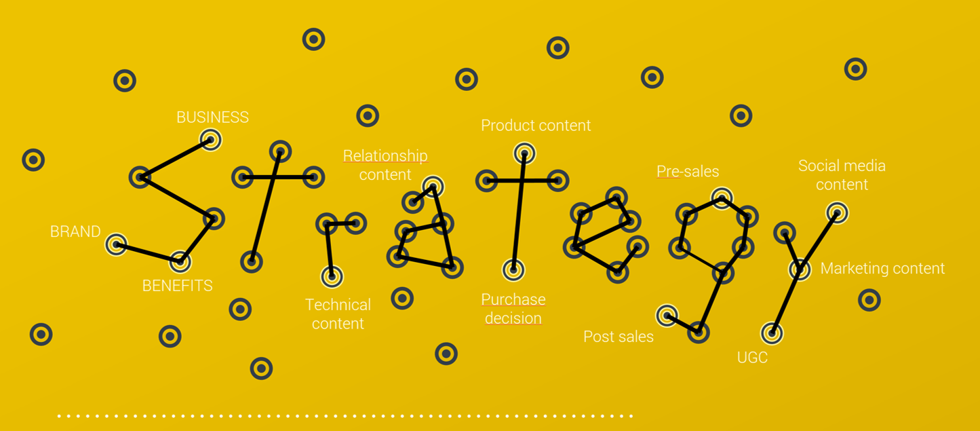CONTENT STRATEGY, HALF WAY BETWEEN DISCIPLINE AND INNOVATION
Unlike content marketing which attracts a lot of attention, particularly in the digital space, content strategy is relegated to the status of second-class citizen and is rarely defined in a comprehensive manner.
If we look for a definition of content strategy on the web we may find confusing descriptions such as ‘content strategy is the planning and execution of a content marketing strategy’ or more simply ‘content strategy is a core pillar of content marketing’. In other cases, content strategy is described as ‘a method to decide how, where, when and why content is created and distributed on social media’.
We are off track: content strategy is not limited to one channel in particular and it is not a branch of content marketing.
Therefore, how can we define content strategy?
Content strategy is a transversal, systematic and repeatable process that enables managing content throughout its lifecycle, from creation and review to publication, reuse, and even disposal.
Similarly to any other process, content strategy will go through its own stages, milestones and timelines, it will define its own roles and responsibilities, and it will provide its performance metrics.
When I discuss content strategy with large corporations, the typical reaction from management is ‘we carry out many content activities, we have our social pages, we work with SEO experts, we collaborate with our R&D department, …’. This is all good. It is important to understand, however, that all these activities may not be relevant from a content strategy perspective, especially if they are not integrated in a systematic and reusable process that allows managing content in a multi-mode, multi-channel environment.
Content strategy can quite effectively be described as a ‘connect the dots’ exercise.
The dots to be connected are Brand, Business and Benefits, forming a consistent line which will touch the Brand’s mental territory, the Organisation’s business objectives and the Benefits expectations of the Users.

Content strategy goes beyond specific content activities, and looks at Content as a corporate asset, a key strategic component and a true business driver.
If we wanted to summarise content strategy with a single sentence
we could say that content strategy is the process that leads an organisation to identify and bridge the gap between the Brand and the User experience, using trust and credibility as a preferential means to an end.
Everything is content…True.
Yet, for a content strategist, not all content is equally important. It is highly appropriate to refer to business-critical content, i.e. content which is:
- crucial for the business activities of the Organisation
- an integral part of the Customer lifecycle
- an integral part of the Product lifecycle
- a Competitive advantage
But more importantly, content strategy requires the ability to innovate.
It is like solving a puzzle: the relation between cause and effect exists but is not immediately accessible, because we are in a dynamic and adaptable system. Even though content strategy is a systematic and repeatable process, the outcome of that process is unpredictable. In this context, even the use of best practices or test and tried methodologies will not be enough to produce a known- in-advance result. Rather, leveraging a network of skilled professionals can prove to be the key to success, whatever shape and form it may take each time.